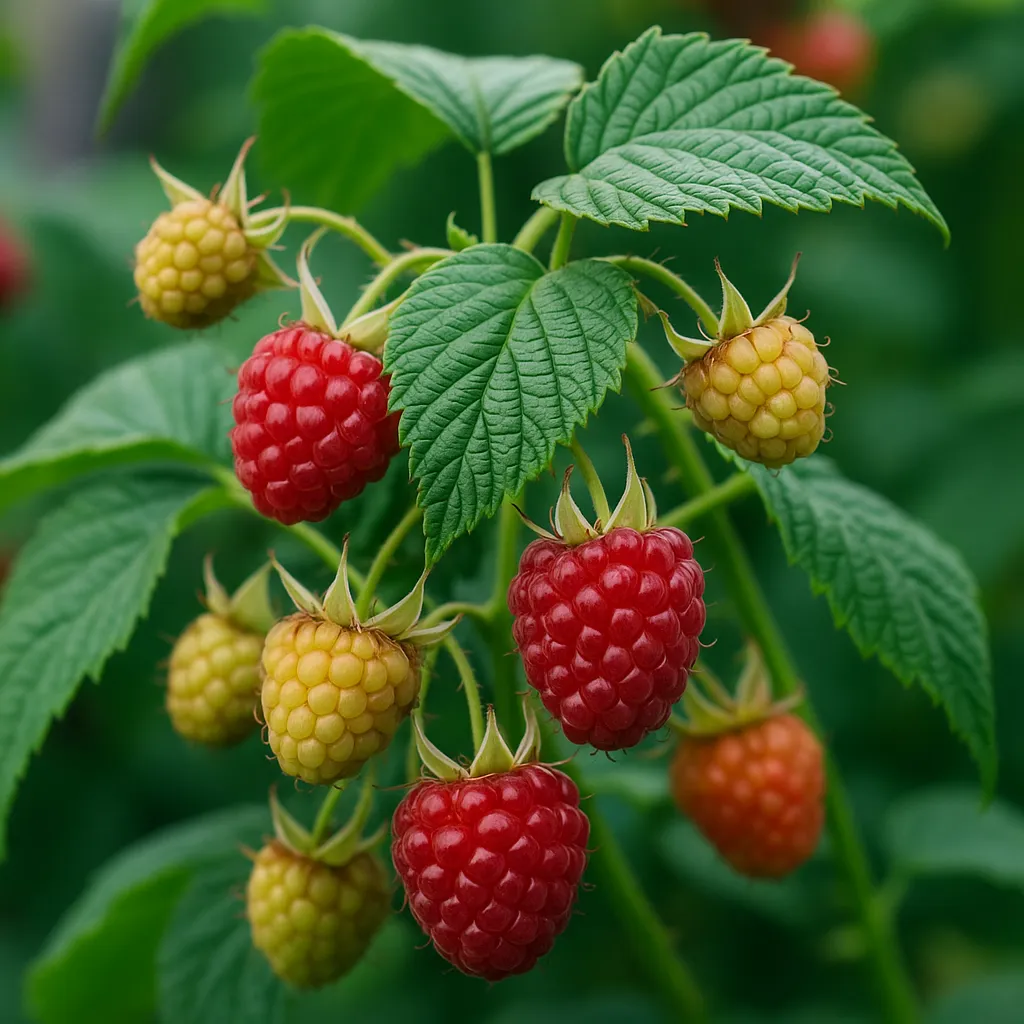Growing Raspberries in Small Spaces: A Complete Guide for Urban Gardeners
Learn how to grow raspberries in small spaces with this complete guide. Discover the best varieties, container tips, pruning methods, and care instructions for thriving balcony or patio raspberry plants.

Raspberries are among the most rewarding fruits to grow — sweet, colorful, and full of flavor. While they are often associated with large country gardens, modern cultivation methods make it entirely possible to grow these delicious berries in small spaces, even on balconies or patios. With the right approach, you can enjoy homegrown raspberries no matter where you live.
Choosing the Right Raspberry Variety
Not all raspberry plants are created equal, especially when it comes to limited spaces. When growing in containers or compact garden areas, the variety you choose matters greatly. Opt for dwarf or compact varieties that are naturally smaller and easier to manage. Examples include Raspberry Shortcake, Heritage, and Autumn Bliss. These cultivars are self-supporting and produce abundant fruit without the need for large trellises.
Ever-bearing vs. Summer-bearing
There are two main types of raspberries: ever-bearing (or fall-bearing) and summer-bearing. Ever-bearing varieties produce fruit on new canes in late summer and again in early fall. They are ideal for container gardening because they are easy to prune and provide continuous harvests throughout the season. Summer-bearing raspberries, on the other hand, yield a larger crop once a year, typically in June or July, and require more space for proper cane development.
Choosing Containers and Soil
If you don’t have garden soil available, containers are a perfect solution. Select a large, deep pot — ideally 40 to 50 cm deep and wide — to allow enough room for the plant’s roots to expand. Good drainage is crucial, as raspberries dislike waterlogged soil. Ensure the container has holes at the bottom and consider adding a layer of gravel or broken pottery pieces to enhance drainage.
For soil, use a rich, well-draining potting mix combined with compost. A blend of loam, perlite, and organic matter works best. Maintain a slightly acidic pH between 5.5 and 6.5, similar to what blueberries prefer.
Planting and Positioning
Raspberries thrive in full sun, requiring at least six hours of direct sunlight daily. Place your containers in a bright spot, ideally facing south or west. When planting, make sure to bury the root ball so that the crown of the plant sits just below the surface. Water thoroughly after planting to help the soil settle around the roots.
Companion Planting
Companion plants like chives, garlic, or marigolds can help deter pests naturally. However, avoid growing raspberries near potatoes, tomatoes, or peppers, as these can spread diseases such as verticillium wilt, which raspberries are susceptible to.
Watering and Feeding
Regular watering is key to successful raspberry growth, especially in containers where soil dries out quickly. Keep the soil moist but not soggy. During hot summer days, you may need to water daily. Mulching with straw or shredded leaves helps retain moisture and prevent weeds from sprouting.
Feed the plants with a balanced organic fertilizer in early spring and again mid-season. Alternatively, use compost tea every few weeks to enrich the soil with nutrients. Avoid over-fertilizing, as too much nitrogen can lead to excessive leaf growth and fewer berries.
Training and Support
Even compact raspberry varieties benefit from a bit of support. Use small trellises, bamboo stakes, or string to keep canes upright. This not only improves air circulation but also makes harvesting easier and reduces the risk of fungal diseases.
Pruning Raspberries
Proper pruning ensures healthy plants and consistent fruit production. For ever-bearing raspberries, cut all canes down to the ground in late winter or early spring before new growth appears. This encourages new fruiting canes each season. For summer-bearing types, prune only the canes that have already produced fruit, leaving the new green canes for next year’s crop.
Managing Pests and Diseases
Common pests that may affect raspberries include aphids, spider mites, and raspberry beetles. Regular inspection is vital. You can spray plants with a mild soap solution or neem oil to control infestations naturally. To prevent fungal issues like gray mold or powdery mildew, ensure good airflow between plants and avoid overhead watering.
Harvesting and Storing
Raspberries typically begin producing fruit in their second year, although some ever-bearing varieties may produce a small crop in the first year. Harvest berries when they are fully colored and come off the stem easily. Avoid picking them when wet, as moisture shortens their shelf life. Fresh raspberries can be refrigerated for up to three days or frozen immediately for later use.
Encouraging Continuous Harvest
To extend your harvest period, plant multiple ever-bearing varieties with slightly different ripening times. This ensures you’ll have fresh raspberries from early summer until the first frost.
Winter Care and Maintenance
During winter, container-grown raspberries require protection from frost. Move the pots to a sheltered area, such as an unheated greenhouse or garage. If left outdoors, wrap containers with burlap or bubble wrap to insulate the roots. Water occasionally during dry spells to prevent the soil from drying out completely.
Benefits of Growing Raspberries in Small Spaces
- Accessibility: Easy to manage, prune, and harvest due to compact growth.
- Versatility: Suitable for patios, balconies, or even indoor conservatories.
- Freshness: Homegrown raspberries have superior flavor compared to store-bought ones.
- Environmental benefits: Reduces packaging waste and supports urban biodiversity.
Conclusion
Growing raspberries in small spaces is not only possible but deeply rewarding. With the right variety, soil, and care, you can transform even the tiniest balcony into a productive berry patch. From their vibrant colors to their sweet, tangy taste, raspberries bring both beauty and flavor to your home garden. Whether you’re an experienced gardener or a beginner, the joy of picking fresh berries right from your own container plants is unbeatable.
Start small, experiment with varieties, and enjoy the satisfaction of nurturing your own mini raspberry haven.


